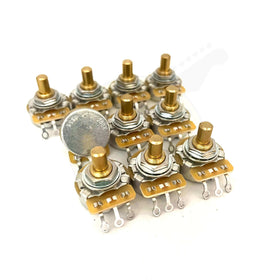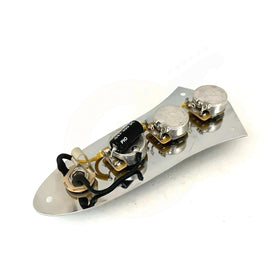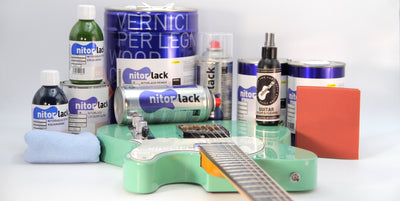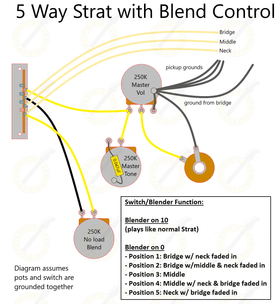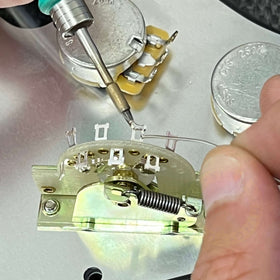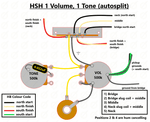Guitar potentiometers (we'll refer to them as pots from here on in) are essentially variable resistors that control the amount of signal being allowed through depending on the point of the pot's rotational sweep. They allow us to attenuate the signal.
By rotating the pot, you are changing the amount of signal flowing through it. Inside the pot, there is a circular resistor strip (typically a carbon strip) and a wiper which controls the resistance.
Turning your control knob changes the position of the wiper on the resistor strip. The wiper (or sweeper) allows you to choose how far the electricity has to travel on the strip until it reaches its output - thus determining the resistive value on output. This is how we alter volume and tone in a guitar ciruit.
So between lug 1 and lug 3 - the approximate resistance will be the overall resistance of the pot (so 500k if using a 500k pot and 250k if using a 250k pot).
The resistance will change depending on the position of the sweeper across the strip. On CTS pots, this element is a carbon track. The below photo is the inside track of a 250k CTS pot.
 Volume Controls
Volume Controls
With volume controls, more signal gets sent to ground as we rotate the volume control from 10 to 0 - this is because lug 3 is grounded. The signal is being sent to ground as we rotate the wiper.
With the pot fully open at 10, no signal is sent to ground, so the guitar is at full volume. As we rotate the pot, the sweeper gets connected to the grounded lug and decreases in volume until it is fully shut off and all of the signal is sent to ground. Volume controls will only work if lug 3 is grounded.
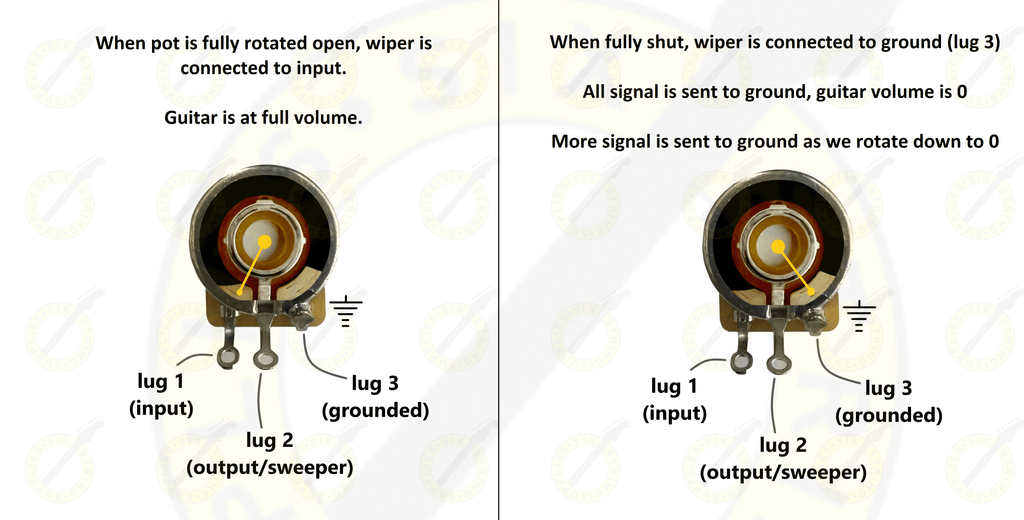
With tone controls, the same thing is happening, except the signal is being sent to ground (through lug 3) via a fixed value capacitor. The capacitor will reject the lower frequencies, only allowing the higher frequencies to be sent to ground.
As we rotate our tone control and send the signal to ground, the high end is rolled off to ground. This is what creates the darker tone as we turn our tone control.

The value of the tone cap will determine the amount of high end that is rolled off to ground. A lower value will pass the least amount of highs. This is why many players prefer a 0.022uF over a 0.047uF, regardless of if being used with single coils or humbuckers. The 0.022uF retains more high end in the roll off.
A higher value of tone cap (0.1uF) will roll off the most amount of highs.
General rule of thumb: the higher the capacitor value, the darker and steeper the roll off.
However, don't be fooled or tricked into trying to use lower and lower values to try and get an ever darker tone and steeper roll-off. A guitar pickup can only get so dark to a certain point, after which, it becomes redundant. The tried and tested commonly used values in guitar wiring are exactly that - tried and tested.
- 0.015uF
- 0.022uF
- 0.033uF
- 0.047uF
- 0.068uF
- 0.1uF
This a fairly limited selection - there are obviously other values that we can use, but for a tone control, these are by far the most common.
Other Guides:
How To Make a No Load Tone Pot (DIY)


